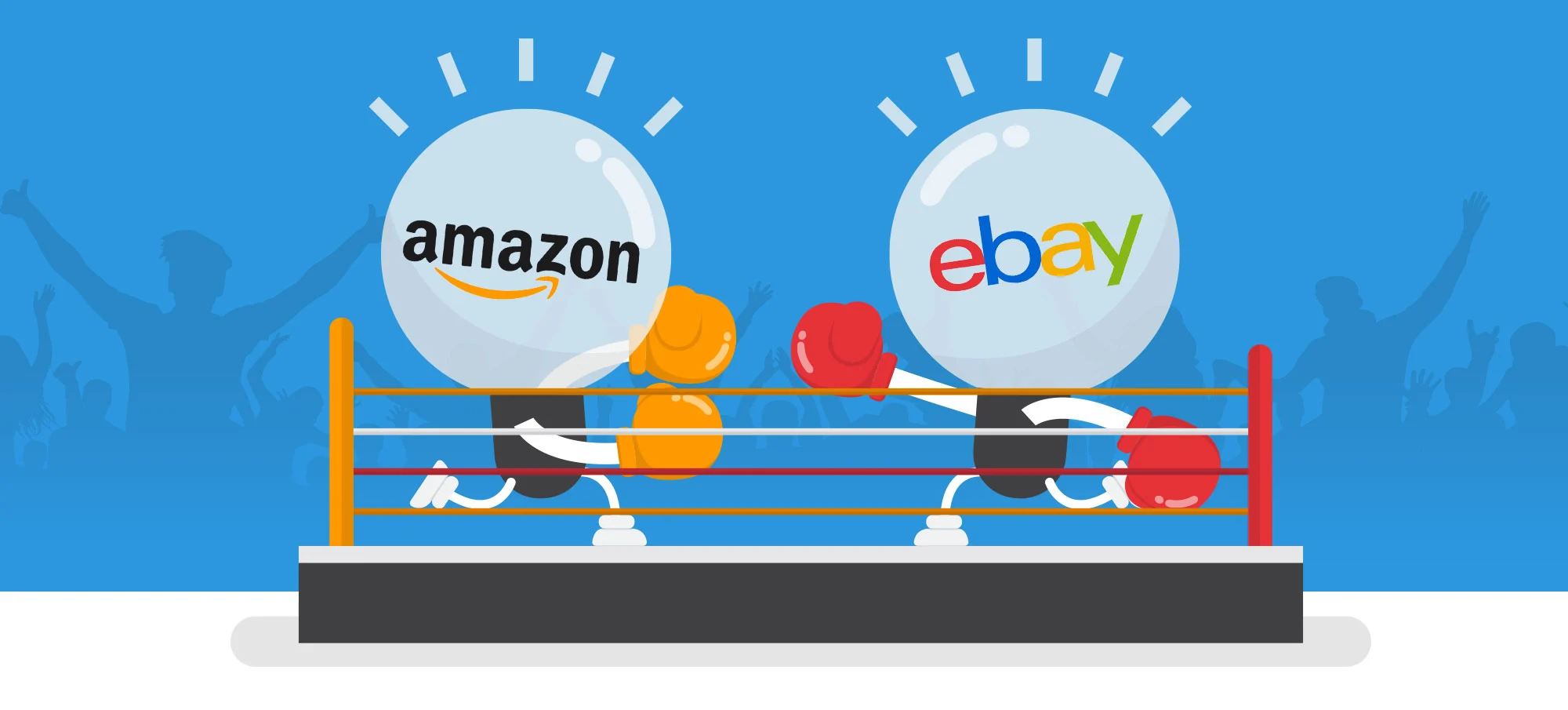Battle of Titans: eBay vs. Amazon – Navigating the E-commerce Landscape
In the vast expanse of e-commerce, two behemoths have emerged, shaping the way consumers buy and sell goods online: eBay and Amazon. Both giants offer unique platforms, each with its strengths, weaknesses, and distinct approaches to the digital marketplace. This article explores the key differences between eBay and Amazon, shedding light on how these platforms have become titans in the ever-evolving landscape of online commerce.
**1. **Business Models: Auctions vs. Fixed Price**
**eBay:**
One of eBay’s defining features is its auction-style listing format. Sellers can choose to auction their items, allowing buyers to bid on them, creating a sense of competition and excitement. This format is particularly suitable for unique, rare, or collectible items, as it allows the market to determine the value through bidding.
**Amazon:**
In contrast, Amazon primarily employs a fixed-price model. Sellers set a specific price for their products, and customers can purchase items at that price without the need for bidding. This approach is more conventional and aligns with the typical retail experience, providing a straightforward and efficient shopping process.
**2. **Product Variety: Diverse vs. Specialized**
**eBay:**
eBay is known for its diverse product offerings, ranging from vintage collectibles and antiques to brand-new electronics and fashion items. The platform’s auction format encourages the sale of unique and hard-to-find items that might not be readily available in traditional retail settings. eBay is a marketplace where sellers can offer a wide array of products, catering to niche markets.
**Amazon:**
Amazon, on the other hand, is a retail powerhouse with a vast and comprehensive product catalog. The platform spans numerous categories, including electronics, books, apparel, and groceries. Amazon’s extensive inventory includes both new and used items, providing customers with a one-stop-shop for virtually anything they need. The emphasis is on efficiency, with a focus on quick and reliable transactions.
**3. **Selling Experience: Individual vs. Professional Sellers**
**eBay:**
eBay caters to both individual sellers and businesses. Casual sellers can list items for sale without the need for a professional seller account. This flexibility makes eBay accessible to individuals looking to declutter their homes or sell occasional items. Additionally, businesses can operate as professional sellers, benefitting from advanced selling tools and analytics.
**Amazon:**
Amazon places a strong emphasis on professional sellers. To sell on Amazon, individuals typically need a seller account, and businesses can choose from various subscription plans based on their scale of operations. The platform provides a suite of tools and services to help businesses manage their inventory, fulfill orders, and optimize their sales strategies.
**4. **Fulfillment Services: eBay’s Flexibility vs. Amazon’s FBA**
**eBay:**
eBay allows sellers to choose their preferred fulfillment methods, whether it’s handling shipping independently or using third-party logistics providers. Sellers have the freedom to set their own shipping policies and fees. While this offers flexibility, it places more responsibility on individual sellers for the fulfillment and shipping process.
**Amazon:**
Amazon’s Fulfillment by Amazon (FBA) service takes a different approach. With FBA, sellers can leverage Amazon’s extensive fulfillment network. Sellers send their products to Amazon’s warehouses, and the company takes care of storage, packing, and shipping. FBA also offers benefits like Prime eligibility, which can enhance a product’s visibility and appeal to Prime members.
**5. **Pricing Structure: Transparent vs. Variable**
**eBay:**
eBay’s pricing structure typically involves listing fees, final value fees (based on the item’s sale price), and optional promotional fees for enhanced visibility. While individual listing fees are often nominal, the final value fees can vary depending on the category and format (auction vs. fixed price). Sellers can choose from various listing options, each with its associated costs.
**Amazon:**
Amazon’s pricing structure is primarily based on a combination of referral fees and fulfillment fees for sellers using FBA. Referral fees are a percentage of the item’s sale price, varying by category. Fulfillment fees cover storage, packing, and shipping when utilizing FBA. Amazon also offers optional programs and advertising services with additional fees for sellers looking to enhance their product visibility.
**Conclusion: Choosing the Right Platform for You**
In the eBay vs. Amazon battle, the choice ultimately depends on the goals, preferences, and offerings of sellers and buyers. eBay’s auction-style format and diverse product range make it an attractive option for those seeking unique items and individual sellers. On the other hand, Amazon’s fixed-price model, extensive catalog, and emphasis on professional sellers cater to a broader retail experience.
Both platforms have become integral players in the e-commerce ecosystem, each with its distinct advantages. Sellers and buyers alike should consider their specific needs, the nature of their products, and the desired selling experience when choosing between eBay and Amazon. As these e-commerce titans continue to evolve, the competition remains fierce, ensuring ongoing innovation and improvements to meet the ever-changing demands of the digital marketplace.

Leave a Reply